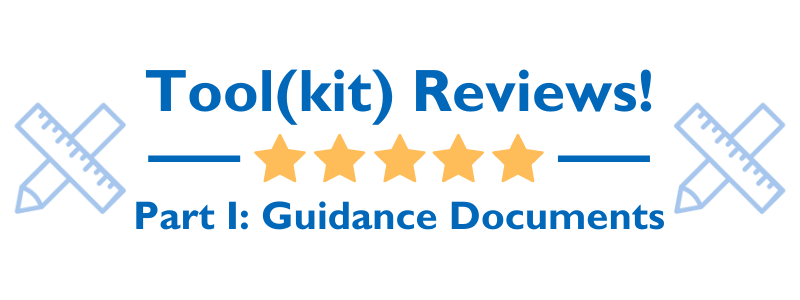Tool(kit) Reviews! Part I: Guidance Documents

In this three-part blog series, staff across USAID share their go-to resources from Learning Lab’s CLA, Monitoring, and Evaluation Toolkits. Read their tool(kit) reviews for tips on practical application, and be inspired to try out new tools with your team for better development programming!
Part I: Guidance Documents
Part II: Templates and Checklists
Part III: Interactive Tools
--------------
It Really Tells You ‘How To’
By Raina Zantout, Monitoring, Evaluation and Learning Specialist, Bureau for Policy, Planning and Learning's Program Cycle Mechanism with USAID/Haiti
Resource/Tool: How-To Note: Activity Monitoring, Evaluation, and Learning Plan
Featured in: CLA, Monitoring, Evaluation toolkit
⭐⭐⭐⭐⭐
I needed to give a presentation on Activity Monitoring, Evaluation and Learning (MEL) Plans to implementing partners and wanted to break down the components of the plan in detail. I went searching on Learning Lab (it wasn’t that hard) and found this How-To Note: Activity MEL Plans. I also found other relevant resources. Using the How-To Note, I was able to refine our presentation, providing key information about each section of the plan and what is required. The resource also provided broad guidance (points to consider) for how to work with implementing partners to develop and carry out the MEL Plans. After the training, I shared the sample Activity MEL Plan template, this Note, and other resources (from Learning Lab and elsewhere) with our partners.
-----------
Don’t Overlook the PMP How-To Note
By Tonya Giannoni, Chief of Party, Bureau for Policy, Planning and Learning's Program Cycle Mechanism
Resource/Tool: How-To Note: Prepare and Maintain a Performance Management Plan
Featured in: CLA, Monitoring, Evaluation Toolkit
⭐⭐⭐⭐⭐
I am often asked how to set up a monitoring, evaluation and learning (MEL) system at a portfolio or office level. While the Performance Management Plan (PMP) How-To Note is focused primarily on developing a performance management plan for a Country Development Cooperation Strategy (CDCS), it in fact includes all of the components of what it takes to have a MEL system in place at a portfolio or office level.
Don’t be afraid to use elements of the How-To Note to think about how to transform data into evidence for decision making, for example. I find one of the most important tools in this How-To is the schedule of performance management (and don’t forget CLA actions) tasks. Good luck!
---------------
Achievable Goals, Adaptable Plans
By Camille Guyot-Bender, Adaptive Management Specialist, Bureau for Policy, Planning and Learning's Program Cycle Mechanism with the Bureau for Humanitarian Assistance
Resource/Tool: Discussion Note: Adaptive Management
Featured in: CLA Toolkit
⭐⭐⭐⭐⭐
As the Adaptive Management Specialist in the Applied Learning Team within the Bureau for Humanitarian Assistance (BHA), I am charged with mainstreaming adaptive management across BHA. I have referred back to the Adaptive Management Discussion Note on numerous occasions. In my attempt to initially understand adaptive management, it helped to summarize the concept and also provided me with the official USAID definition.
Understanding adaptive management conceptually was helpful, of course, but where I really struggled was when I was required to speak to staff about practical uses of adaptive management. Through this Discussion Note, I began to really understand that it isn’t just about adapting during a plan or activity but it is a deliberate and forward thinking practice. The Discussion Note walks through each stage of the Program Cycle and pulls out very specific and tangible approaches that you can do to better prepare for inevitable changes during an activity process.
So, if you are struggling with achieving your objectives because your plans of action never happen as they were planned, or if adapting your plan is a reactive process for you but you would like for it to be more intentional and comprehensive, then this Discussion Note is for you!



